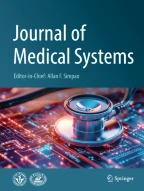Abstract
Although careful planning of surgical approach is a key for success of surgery, conventional planning and simulation tools cannot support detailed discussion. This issue is derived from the difficulty of estimating complex physical behavior of soft tissues provided by a series of surgical procedures like cutting and deformation. This paper proposes an adaptive physics-based framework that simulates both interactive cutting and accurate deformation on virtual bodies, and performs preoperative planning for supporting strategic discussion. We focus on limited use of the two models: A particle-based model and an FEM-based model considering required quality and performance in different situations. FEM-based deformation of incision accurately produces estimated surgical fields. Based on the framework, a strategic planning system was developed for supporting decision of surgical approach using 3D representation of the surgical fields. We applied clinical CT dataset of an aortic aneurysm case to the system. Some experiments and usability tests confirmed that the system contributes to grasping 3D shape and location of the target organs and performs detailed discussion on patient-specific surgical approaches.
Similar content being viewed by others
References
Gorman, P. J., Meier, A. H., and Krummel, M., Computer-assisted training and learning in surgery. Comput. Aided Surg. 5:120–127, 2000.
Gross, M., Graphics in medicine: From visualization to surgery simulation. ACM Comput. Graph. 32:53–56, 1998.
Hohne, K. H., Pflesser, B., Pommert, A., Riemer, M., Schiemann, T. H., Schubert, R., and Tiede, U., A new representation of knowledge concerning human anatomy and function. Nat. Med. 1(6):506–511, 1995.
Koch, R. M., Gross, M. H., Carls, F. R., Bren, D. F., Fankhauser, G., and Parish, Y. I. H., Simulating facial surgery using finite element models. ACM SIGGRAPH 421–428, 1996.
Xia, J., James, X., Horace, H. S. I., Nabil, S., Helena, T. F. W., Jaime, G., Dongfeng, W., Richie, W. K. Y., Christy, S. B. K., and Henk, T., Three- dimentional virtual-reality surgical planning and soft-tissue prediction for orthognathic surgery. IEEE Trans. Inform. Technol. Biomed. 5(2):97–107, 2001.
Preim, B., Spindler, W., Oldhafer, K. J., and Peitgen, H. O., 3D-Interaction techniques for planning of oncologic soft tissue operations. Proc. Graph. Interface 2001.
Ehrhardt, J., Handels, H., Malina, T., Strathmann, B., Plotz, W., and Poppl, S. J., Atlas-based segmentation of bone structures to support the virtual planning of hip operations. Int. J. Med. Inform. 64:439–447, 2001.
Omoto, R., Minimally Invasive Cardiac Simulation, Shindan to Chiryo Inc., Japan, 1999.
Basdogan, C., Ho, C. H., and Srinivasan, M. A., Simulation of tissue cutting and bleeding for laparoscopic surgery using auxiliary surfaces. Med. Meets Virtual Real. 38–44, 1999.
Bruyns, C., Senger, S., Interactive cutting of 3D surface meshes. Comput. Graph. 25:635–642, 2001.
Reining, K. D., Rush, C. G., Pelster, H. L., Spitzerm, V. M., and Heath, J. A., Real-time visually and haptically accurate surgical simulation. Health Care Inform. Age 542–546, 1996.
Pflesser, B., Petersik, A., Tiede, U., Hohne, K. H., and Leuwer, R., Volume cutting for virtual petrous bone surgery. Comput. Aided Surg. 7(4):74–83, 2002.
Bielser, D., and Gross, M. H., Interactive simulation of surgical cuts. Pac. Graph. 116–125, 2000.
Ganovelli, F., Cignoni, P., Montani, C., and Scopigno, R., Enabling cuts on multiresolution representation. Vis. Comput. 17:274–286, 2001.
Mor, A., Progressive cutting with minimal new element creation of soft tissue models for interactive surgical simulation. Doctoral Dissertation, Tech. Report CMU-RI-TR-01-29, Robotics Institute, 2001.
Braff, D., and Witkin, A., Physically based modeling: Principles and practice. ACM SIGGRAPH97 Course Notes, 1997.
Gibson, S., and Mirtich, B., A survey of deformable modeling in computer graphics. MERL Tech. Rep., TR97-19, 1997.
Nedel, L. P., and Thalmann, D., Real time muscle deformations using mass-spring systems. Comput. Graph. Int. 156–165, 1998.
Kuhnapfel, U., Cakmak, H. K., and Mass, H., Endoscopic surgery training using virtual reality and deformable tissue simulation. Comput. Graph. 24(5):671–682, 2000.
Bro-Nielsen, M., and Cotin, S., Real-time volumetric deformable models for surgery simulation using finite elements and condensation. Eurograph. Comput. Graph. Forum 15(3):57–66, 1996.
Hirota, K., and Kaneko, T., A method of representing soft tissue object in virtual environment. Trans. IPSJ 39(12):3261–3268, 1998.
Cotin, S., Herve, D., and Ayache, N., A hybrid elastic model for real-time cutting, deformations, and force feedback for surgery training and system. Vis. Comput. 16:437–452, 2000.
Nienhuys, H. W., and Stappen, A. F., A surgery simulation supporting cuts and finite element deformation. MICCAI 153–160, 2001.
Nakao, M., Kuroda, T., Oyama, H., Komori, M., Matsuda, T., and Takahashi, T., Planning and training of minimally invasive surgery by integrating soft tissue cuts with surgical views reproduction. CARS 13–18, 2002.
Nakao, M., Kuroda, T., Oyama, H., Komori, M., Matsuda, T., and Takahashi, T., Combining volumetric soft tissue cuts for interventional surgery simulation. MICCAI 178–185, 2002.
Berkley, J., Weghorst, S., Gladstone, H., Gaugi, G., Berg, D., and Ganter, M., Banded matrix approach to finite element modeling for soft tissue simulation. Virtual Real. Res. Dev. Appl. 4:203–212, 1999.
Ruspini, D., Kolarov, K., and Khatib, O., The haptic display of complex graphical environments. ACM SIGGRAPH 345–52, 1997.
Nakao, M., Kuroda, T., and Oyama, H., An input method of surgical plans by mouse manipulation. Hum. Interface Symp. 301–304, 2002.
Picinbono, G., Delingette, F., and Ayache, N., Non-linear anisotropic elasticity for real-time surgical simulation. INRIA Yearly Activity Rep. 2000.
Acknowledgments
This research is supported by Grant-in-Aid for Scientific Research (S) (16100001) and Young Scientists (A) (16680024) from The Ministry of Education, Culture, Sports, Science and Technology, Japan.
Author information
Authors and Affiliations
Corresponding author
Rights and permissions
About this article
Cite this article
Nakao, M., Kuroda, T., Oyama, H. et al. Physics-Based Simulation of Surgical Fields for Preoperative Strategic Planning. J Med Syst 30, 371–380 (2006). https://doi.org/10.1007/s10916-006-9021-4
Received:
Accepted:
Published:
Issue Date:
DOI: https://doi.org/10.1007/s10916-006-9021-4
